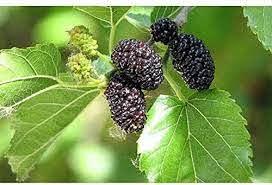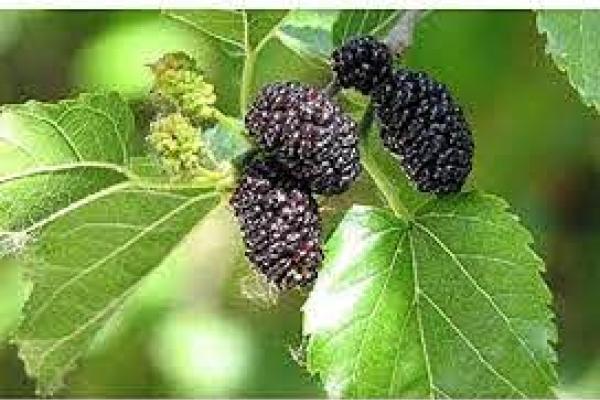Mulberry Agrofood Chain: Fruit - Forage - Silkworm Sectors

The planned activities of the project are: i) production of fresh fruits - short supply chain - or fruits processed by the agro-industry - dried fruits, jams and other innovative products (FRUIT CHAIN); ii) use of green pruning residues deriving from the fruit chain and leaves from mulberry plants (LEAF CHAIN) for the production of fodder for zootechnical use (fresh leaves and dried leaves meal); iii) use of fresh leaves for silkworm rearing (SILKWORM CHAIN) and use of dried leaves meal for the formulation of a diet for rabbits (RABBIT CHAIN) or for the preparation of an artificial diet for silkworm rearing (SILKWORM CHAIN).
The INNOVATION of this PROJECT, based on the sustainability and the efficiency of available resources, aims to create new supply chains in order to relaunching traditional production (silkworm rearing) at regional and national level, optimizing the resources available in the region.
The project applies the principle of circular economy promoted by the EU (maximum use of resources and minimum waste production - zero waste - COM / 2014/0398).
The PROJECT ORIGINATES from specific demands from farmers of Piedmont:
- Mellano M., involved in the production of mulberry fruit, which in a period of high productivity would like to manage the large quantities of green mulberry pruning waste in a sustainable way for both an economic and environmental point of view
- Perano D., a rabbit breeder who wants to differentiate his production and to offer a rabbit meat with the following characteristics on the market: (i) obtained with raw materials (feed formulation) of Piedmont origin, (ii) with an improved chemical-nutraceuticals composition (enrichment in n3 polyunsaturated fatty acids), (iii) more responsive to consumer requirements in terms of chemical-sensorial composition and economic-environmental sustainability. The farmer intends to reduce the ration cost and consequently increase its income over feed cost
- Ribotta R., Fea M. and Vallino A., who like to diversify their company production
Textile companies interested in obtaining 100% made in Italy silk
MARKETS of interest: farms, breeders, agri-food, feed and textile companies.
In the past, in Italy, the mulberry fruit production was closely linked to silkworm, while now it is an important activity for the whole supply chain. In this project the mulberry valorization contributes in an innovative way to a sustainable development of the Piedmont natural resources, through an active synergy in the same areas between the companies producing the raw material and those dedicated to fruit processing for the production and marketing of new products as dried fruits, jams and other preparation derived from mulberry fruits. The use of innovative analytical techniques (as phytochemical fingerprinting) is aimed to valorize mulberry fresh fruits and relative derived-products as new sources of bioactive molecules and to set an effective tool for quality control, traceability and standardization of the whole production supply chain with a fully exploitation of the considered agri-food products.
Mulberry plants will also be used for the leaf biomass production. Pruning waste from mulberry trees will be used as raw material for leaf supply aimed to food use in rabbit feeding and to silkworm in order to use natural resources with sustainable reduction of waste and environmental pollution according to “circular agricolture”. The valorization of mulberry green pruning waste will therefore enable innovative raw materials to be used in the activities provided by the further project steps. The development of a leaf biomass production and an economy linked to the crop waste exploitation may be an excellent tool to valorize a new rurality: the use of pruning waste could be a opportunity for companies that are increasingly characterized by multi-functionality, product diversification and integrated income.
Use mulberry leaves as raw material for rabbit feed In Piedmont, the rabbit farms are characterized by good technological level and medium-large size (from 100 to 1000 mares). In the whole region, there are about 70 specialized farms located in hilly or mountainous areas, or in Alpine valley bottoms, particularly in the province of Cuneo.In recent years, the sector is suffering due both to the sharp fluctuations in the meat sales price and to the increase in the costs of raw materials used in animal feed. At the same time, fruit mulberry producers have to manage high amounts of green pruning residues generated by the vigor of mulberry fruit trees. Mulberry leaves are well known for their favourable chemical composition in terms of fiber, polyunsaturated fatty acids and polyphenolic compound contents. Using the green pruning residues to generate new products (raw material) within an established supply chain (rabbit meat production) allows the use and valorization of the nutritive compounds contained in the leaves, enhancing the concept of circular economy in accordance with the European Directive 2008/98/EC.
.
The innovation of the GELSO-NET project is related to the use of an innovative raw material (mulberry leaves meal) that: (i) will enable the valorization of a waste/by-product (circular economy - zero waste), (ii) will reduce the feed cost, (iii) will enable to obtain a meat which better fits the consumer sensitiveness towards the environmental sustainability issue. The farms will increase their income through both the reduction of the feeding cost and the increase of meat product sales (benefit recognized by the consumer)."
In Piedmont, the mulberry tree had been cultivated for the production of leaves that had been used as essential feed for silkworms rearing purposes. Sericulture, strictly linked to mulberry cultivation, had contributed to providing wellbeing and sustenance for many years and many families.
Sericulture and silk worm rearing are strongly connected each other and represent the first phases of the silk production process.
In the past, the province of Cuneo held the Italian national supremacy in the production of cocoons for the silk industry. However, sericulture and silk worm rearing were dismissed in the early twentieth century and nowadays they exert limited productive relevance.
The innovation of the GELSO-NET project is twofold. Firstly, the innovation is linked to the relaunch of the sericulture and silk worm rearing sectors, which represent a potential for the productive diversification of the agricultural farms which, if appropriately managed, would still allow obtining an income. Secondly, the use of an artificial diet for silkworm rearing would make it possible to obtain a traditional production in an innovative way, allowing the silkworm breeding during the whole year.
The noticeable multifunctionality of mulberry, declined in a strictly synergistic way among operators of different sectors, can create a virtuous multi-chain circuit. The added value deriving from the realization of the planned activities can have a positive effect on both primary producers (farms) and a broader set of operators and sectors (textile industry).
So far, sericulture involved feeding silkworms with green mulberry leaves, making this zootechnical sector very seasonal. Breeding follows the vegetative development of mulberry trees and the availability of foliage, the first eggs, in fact, hatch in late April-early May, when the mulberry trees have approximately 4-5 leaves on the shoots.
This project’s innovation will consist, therefore, in the introduction of a new artificial diet that will allow the breeding of the silkworm even after the natural period of production of the fresh leaf.
The evaluation of protocols with artificial diet for the silkworm would allow us not to depend from the seasonal cultivation of mulberry, especially in the first larval ages, with the leaves produced from both fruit and mulberries plants. Specifically, GELSO-NET intends to feed silkworms both with fresh leaves (when available) and with a diet based on partially dehydrated mulberry leaves, in order to secure, at farm level, a continuity of cocoon production for the whole year.
Furthermore, the innovation that we intend to consolidate is an integrated agricultural production model that uses mulberry for silkworm rearing, which is also used, at the same time, for other agricultural productions (fruit chain and rabbit chain).
Documentazione del Convegno finale del GO Gelso-Net
Filiere agroalimentari, I Gruppi Operativi, Piemonte, PEI-AGRI| Titolo/Descrizione | Url | Tipologia |
|---|---|---|
|
Sito web del progetto
|
Sito web
|
|
|
Sito del Dipartrimento di cienze Agrarie, Forestali e Alimentari, Capofila del progetto
|
Link ad altri siti che ospitano informazioni del progetto
|
|
|
Sito del Dipartimento di Scienze Agrarie
|
Link ad altri siti che ospitano informazioni del progetto
|
|
|
Astudio
|
Link ad altri siti che ospitano informazioni del progetto
|
|
|
Agrimontana
|
Link ad altri siti che ospitano informazioni del progetto
|
|
|
La Maurina Società Semplice Agricola
|
Link ad altri siti che ospitano informazioni del progetto
|
|
|
Azienda agricola Villa Villacolle di Fea Manuela
|
Link ad altri siti che ospitano informazioni del progetto
|
|
|
Associazione Scientifica Italiana di Coniglicoltura
|
Link ad altri siti che ospitano informazioni del progetto
|
|
|
La via etica della seta
|
Link ad altri siti che ospitano informazioni del progetto
|
|
|
Comizio Agrario
|
Link ad altri siti che ospitano informazioni del progetto
|
|
|
Racconigi, città della seta
|
Link ad altri siti che ospitano informazioni del progetto
|

